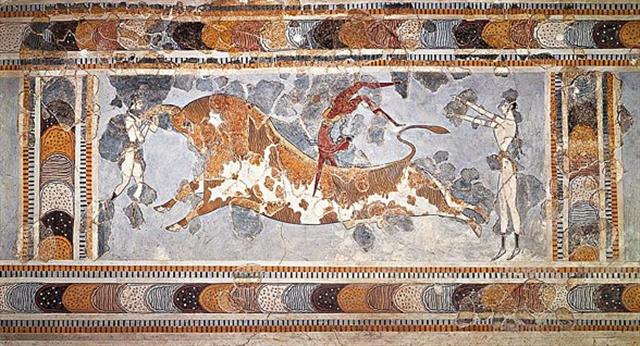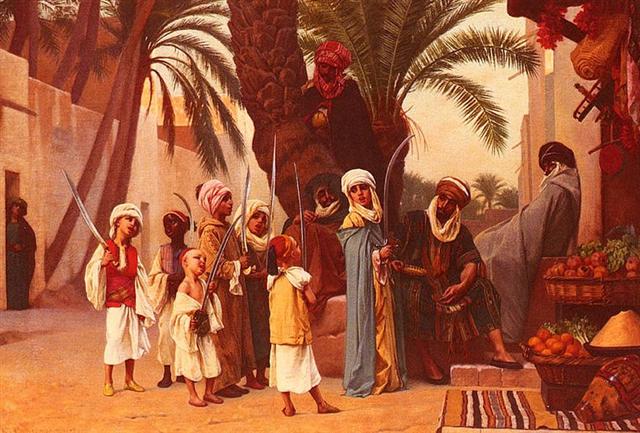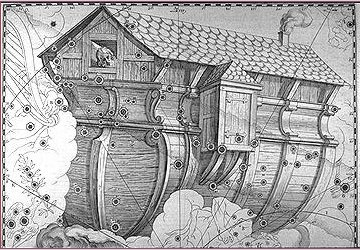When Makoi made his full cycle around the island,
enumerating 59 places, this ought to have corresponded to the
months January and February - which in an ordinary year measured
31 + 28 = 59 days. And when he jumped over number 55 it ought to
have corresponded to the first Bissextile day, the 'leap day'.

In Manuscript E it is stated that the date was Hora Nui 1
and this was
immediately after Ira had taught Makoi the
corresponding string games.
...
On the first day of the month of September ('Hora Nui') they
went up to the yam plantation of Kuukuu - i te raa Po rae o
hora nui i iri ai ki runga ki the uhi a kuukuu (E:46).
We ought to understand that September 1 was the date which
corresponded to March 1 north of the equator.
And the day for the cycle of Makoi could then have
corresponded to day 55 (which was leaped over).
The new year seems to have begun with Spica and Heze and the old
year may have ended with Achernar, Alseiph, and Polaris:
|
CLOSE TO THE
SUN: |
|
AUG
9 |
10
(222) |
11 |
12 |
13
(*145) |
 |
 |
 |
 |
 |
|
Ga6-1 |
Ga6-2 |
Ga6-3 |
Ga6-4 (144 = 12 *
12) |
Ga6-5 (290 / 2) |
|
HEZE
= ζ Virginis
(205.0),
Southern Pinwheel Galaxy = M83 Hydrae
(205.7) |
ε
Centauri (206.3), κ Oct. (206.4)
*165.0 = *206.4 - *41.4 |
no
star listed (207) |
τ
Bootis (208.2),
BENETNASH
(Leader of the Daughters of the Bier) =
η
Ursae Majoris
(208.5),
ν
Centauri (208.7),
μ
Centauri,
υ
Bootis (208.8) |
no
star listed (209) |
 |
|
Oct
12 (285) |
13 |
14 |
15
(*208) |
16 |
|
°Oct 8 |
9 |
10 |
11 (*204) |
12
(285) |
|
'Sept 15 |
16 |
17
(260) |
18 |
19
(*182) |
|
Hora Nui 1 |
"Sept 2 |
3 |
4 |
5
(*168) |
|
CLOSE TO THE
FULL MOON: |
|
FEBR
8 (*324) |
9
(40) |
10 |
11 |
12
(365 + 43 = 408) |
|
... On
February 9 the Chorti Ah K'in,
'diviners', begin the agricultural year. Both
the 260-day cycle and the solar year are used in
setting dates for religious and agricultural
ceremonies, especially when those rituals fall
at the same time in both calendars. The ceremony
begins when the diviners go to a sacred spring
where they choose five stones with the proper
shape and color. These stones will mark the five
positions of the sacred cosmogram created by the
ritual. When the stones are brought back to the
ceremonial house, two diviners start the ritual
by placing the stones on a table in a careful
pattern that reproduces the schematic of the
universe. At the same time, helpers under the
table replace last year's diagram with the new
one. They believe that by placing the cosmic
diagram under the base of God at the center of
the world they demonstrate that God dominates
the universe. The priests place the stones in a
very particular order. First the stone that
corresponds to the sun in the eastern, sunrise
position of summer solstice is set down; then
the stone corresponding to the western, sunset
position of the same solstice. This is followed
by stones representing the western, sunset
position of the winter solstice, then its
eastern, sunrise position. Together these four
stones form a square. They sit at the four
corners of the square just as we saw in the
Creation story from the Classic period and in
the Popol Vuh. Finally, the center stone is
placed to form the ancient five-point sign
modern researchers called the quincunx ...
 |
|
ACHERNAR
(End of the River) =
α
Eridani
(23.3),
χ
Andromedae (23.6),
τ
Andromedae (23.9) |
ALSEIPH
(Scimitar) =
φ
Persei
(24.5),
τ
Ceti (24.7) |
no star listed (25) |
ANA-NIA-10 (Pillar-to-fish by)
χ
Ceti (26.1),
POLARIS
=
α
Ursae Minoris, BATEN KAITOS (Belly of the Fish)
=
ζ
Ceti
(26.6),
METALLAH =
α
Trianguli
(26.9) |
Al Sharatain-1 /
Ashvini-1 (Horse's Head) /
Bond-16 (Dog) /
Mahrū-sha-rishu-ku-1 (Front of the Head of Ku)
SEGIN = ε Cassiopeia, MESARTHIM = γ Arietis,
ψ
Phoenicis (27.2),
SHERATAN
(Pair of Signs) =
β
Arietis,
φ
Phoenicis (27.4)
*351.0 = *27.4 - *41.4 |
|
April 13 |
14 →
41.4 |
15 |
16
(471) |
17
(107) |
|
°April 9 |
10
(100) |
11 |
12
(*22) |
13 |
|
'March 17 |
18 |
19
(78) |
20
(*364) |
0h |
|
"March 3 |
Tarahao 4 (2 * 214) |
5
(64) |
6
(*350) |
7 |
|
Tara, 1. Thorn: tara miro. 2.
Spur: tara moa. 3. Corner; te tara o
te hare, corner of house; tara o te ahu,
corner of ahu. Vanaga. (1. Dollar;
moni tara, id.) 2. Thorn, spike, horn;
taratara, prickly, rough, full of rocks. P
Pau.: taratara, a ray, a beam; tare,
a spine, a thorn. Mgv.: tara, spine,
thorn, horn, crest, fishbone. Mq.: taá,
spine, needle, thorn, sharp point, dart,
harpoon; taa, the corner of a house,
angle. Ta.: tara, spine, horn, spur, the
corner of a house, angle. Sa.: tala, the
round end of a house. Ma.: tara, the side
wall of a house. 3. To announce, to proclaim, to
promulgate, to call, to slander; tatara,
to make a genealogy. P Pau.: fakatara, to
enjoin. Mq.: taá, to cry, to call. 4.
Mgv.: tara, a species of banana. Mq.:
taa, a plant, a bird. Ma.: tara, a
bird. 5. Ta.: tara, enchantment. Ma.:
tara, an incantation. 6. Ta.: tara,
to untie. Sa.: tala, id. Ha.: kala,
id. Churchill
Hao. Ta.: to encircle.
To.: hao, id. Ma.: hao, to
inclose, to draw around. Churchill.
 |
When the Explorers went to the yam plantation in "June 10
this could have been 83 days earlier than "September 1, but in a leap year -
which we can assume because 1 ('leap') day was used for the cycle of
Makoi - the measure would be 84 (as in the Julian
equinox).
|
"June 10 (161) |
83 |
"Sept 1 (245) |
|
85 |
Ga6-1 (141) - 84 = 57 (Ga2-27):
|
MAY 14 |
15 (365 + 135 = 500) |
16 (136) |
17 |
18 (*58 = 2 *
29) |
19 |
 |
 |
 |
 |
 |
 |
|
Ga2-24 |
Ga2-25 |
Ga2-26 |
Ga2-27→ π |
Ga2-28 |
Ga2-29 (59) |
|
φ Gemini (118.4)
*77.0 = *118.4 - *41.4 |
DRUS
(Hard) = χ Carinae
(119.9) |
ω Cancri (120.2) |
8h (121.7)
χ Gemini (121.0),
NAOS
= ζ Puppis
(121.3) |
ρ
Puppis (122.0),
HEAP OF FUEL
= μ Cancri
(122.1),
ζ
Monocerotis (122.3), ψ
Cancri (122.6),
REGOR (Roger backwards) = γ Velorum
(122.7) |
TEGMINE = ζ Cancri
(123.3) |
|
July 17 |
18 |
19 (200) |
20 (*121) |
21 |
22 / 7 |
|
°July 13 |
14 |
15 (196) |
16 |
17 (*118 = 4 * 29½) |
18 |
|
'June 20 |
SOLSTICE |
22 (173) |
23 |
ST JOHN'S
DAY |
25 (*96) |
|
"June 6 |
7 |
8 |
9 (*80) |
Te Maro
10 (161) |
11 |
|
he ea.a Ira.he iri he oho ki runga anake.
i te angahuru o te raa
o te maro i iri ai - Ira got
up. They all climbed to the top of the hill.
They climbed up on
the tenth day of the month of June ('Maro’).
(E:18) |
|
DAY 118 - 64 = 54
54
Vai Rapa
a haka remereme |
31 + 24 =
55 |
56 (Sic!)
Te Vai Rutu Manu
a koro rupa e haho e hivi e e runga e te
puku ohu kahi e |
57 Hanga
Piko (Curved Bay)
a hare utu manu a ana onoono a pu ngotangota |
58 Ata
Popohanga (Morning Shadow)
toou e to ata hero ē |
59 Ata
Ahiahi (Evening Shadow)
toou e honu ē |
|
... The leap day was introduced as part of
the Julian reform. The day following the
Terminalia (February 23) was doubled,
forming the 'bis sextum - literally
'double sixth', since February 24 was 'the
sixth day before the Kalends of March' using
Roman inclusive counting (March 1 was the
'first day'). Although
exceptions exist, the first day of the
bis sextum (February 24) was usually
regarded as the intercalated or 'bissextile'
day since the third century. February
29 came to be regarded as the leap day when
the Roman system of numbering days was
replaced by sequential numbering in the late
Middle Ages
... |
E:46 |
|
1 Ko Apina Iti |
27 |
29 Ko Te Rano A Raraku |
(30) |
|
29 |
|
30 |
|
31 Oparingi |
11 |
(43) |
1 |
45 Vai ngaere |
8 |
54 Vai Rapa |
(55) |
4 |
60 Apina Nui |
|
12 |
11 |
5 |
|
24 |
|
|
... The
'watering place' where the bird beats (the
rhythm)' - wordplay, 'where a certain chant
is being recited' - is located near Hanga
Piko. A recitation provides the following
information for the additional name:
'In Koro Rupa is the
house where one is made to laugh; in Kere
Mea is the house where one is made fun of'
(Barthel 1960:851; Campbell 1971:400). There
the rule of the new birdman was celebrated
(compare koro 'feast'). In RAP.,
koro rupa seems to have the same meaning
as in TUA. kororupo, which describes
a paradise. In the cosmology of the TUA.,
the name also referred to the entrance to
the underworld. Hivi (maybe the same
as hi ivi 'to fish with a hook made
from bone'; compare the narrative ME:363) is
'outside', and 'the elevation from where
(the catch of) the tunafish is announced' is
'above'. This is a reference to a large
boulder beside the place where the canoes
docked in Hanga Piko. There the people
waited for the canoes to return from the
fishing grounds.
'Curved
Bay', the well-known little harbour on the
western shore, is linked with a 'house where
the bird beats (the rhythm), that is, where
a certain chant is being recited. This
establishes a cross-connection to the
watering place by the same name and also to
the 'Koro Rupa' motif and the theme of the
birdman cult. It also suggests the newly
discovered petroglyphs from Hanga Piko (so
far, only partially published by Barthel
1962:Illustration 2). Ana Onoono is a cave
well-suited as an overnight shelter; Pu
Ngotangota is a coastal formation where
seawater is allowed to flow in and out. The
three additions, 'house', 'cave', and
'hole', always describe an enclosed area.
'Yours is the morning shadow' refers to an
area in Ata Hero where the house of Ricardo
Hero is now located. 'Yours is the evening
shadow' belongs to a 'turtle'. I could not
obtain any information about the location,
but I suspect that the 'turtle' refers to a
motif in the narration of Tuki Hakahevari
(the turtle is carved in stone in a cave
along the bay of Apina) ...
(The Eighth Land, pp. 89-90.) |
|
Kere. To moor, to
make fast. Kerekere, black, dark,
blue, obscure, gloom; niho kerekere,
blackened teeth. Hakakerekere, to
blacken. P Pau.: kerekere, black,
dark, somber. Mgv.: kerekere, blue,
dark blue almost black, the color of the
deep ocean, black, somber, darkness. Mq.:
kerekere, keékeé, black, somber,
livid; ere, blue, azure. Ta.:
ereere, black. Churchill.
ELE¹,
v. Haw., be dark, black; adj.
dark-coloured, black, blue, dark-red, brown;
ele-ele, id. Tah., ere-ere,
dark, black, blue. Rarot., kerekere,
id. Marqu., kekee, id.; kee-voo,
darkness, gloom. The application of this
word to colour is doubtless derivative from
the Polynes. Haw. kele, mud, mire (quod
vide), Tong. kèle-kere, earth,
soil, dirt, Sam. 'ele and 'ele-ele,
red earth, dirt, rust; elea, Tong.,
kelea, rusty, dirty; probably all
akin to ala, ara, in ala-ea,
earth, clay ... Jav., iran, black. N.
Celebes (Kema), hirun, id. In the
following Greek words the first constituent
proclaims their affinity to the Polynesian
ere, ele: -
ερεβος,
darkness of the grave, the dark passage from
earth to Hades; ερεβεννος, dark,
gloomy; ερεμνος, sync. fr. previous
word, black, swarthy; ερεφω, to
cover; ορφνη, darkness of night;
ορφνος, dark, dusty; οροφη, roof
of a house. Sanskr., aruņa,
tawny, dark, red; s.
the dawn, the sun; aruņita,
made red. Benfey refers the Sanskrit word to
arus,
a wound. Lidell and Scott refer the Greek
words to ερεφω,
to cover. They are plausible; but are they
the true roots of stems, in view of the
Polynesian ele,
ere?
Dr. J. Pickering, in his Greek Lexicon,
derives ερεβος
'from ερα
(the earth) or ερεφω
(to cover)'. The former seems to me the
better reference.
ELE²,
prefix.
Haw., an intensitive added to many words,
imparting a meaning of 'very much, greatly';
ele-u,
alert, quick; ele-ma-kule,
old, aged, helpless; ele-mio,
tapering to a point; ele-ku,
easily broken, very brittle;
ele-hei,
too short. Tah., ere-huru,
encumbered, too much of a thing. A. Pictet
... says, apropos of the derivation of the
word Erin:
'L'irlandais er
comme adjectif magnus, nobilis, paraît être
identique à l'er
intensitif de l'irlandais et du cymrique,
considéré comme une particule inséparable,
et qui serait ainsi proprement un adjectif.
Il est à remarquer en confirmationm, que le
zend airya
= sanskr. arya
avec l'acception de bon, juste, est
également devny ér
dans les composés du Pârsi, comme
ér-maneshu,
bon esprit, er-tan,
bon corps (Spiegel, Avesta, i. 6). De là à
un sens intensitif, transition était
facile.' Why not widen the philological
horizon by admittning the Polynesian
ere,
ele,
to consideration as well as the Irish,
Welsh, or Parsi? And why may not the O.
Norse ar,
early, first; aerir,
messengers; the Sax. er,
before, in time, go up to the same root as
those others? (Fornander) |

|







